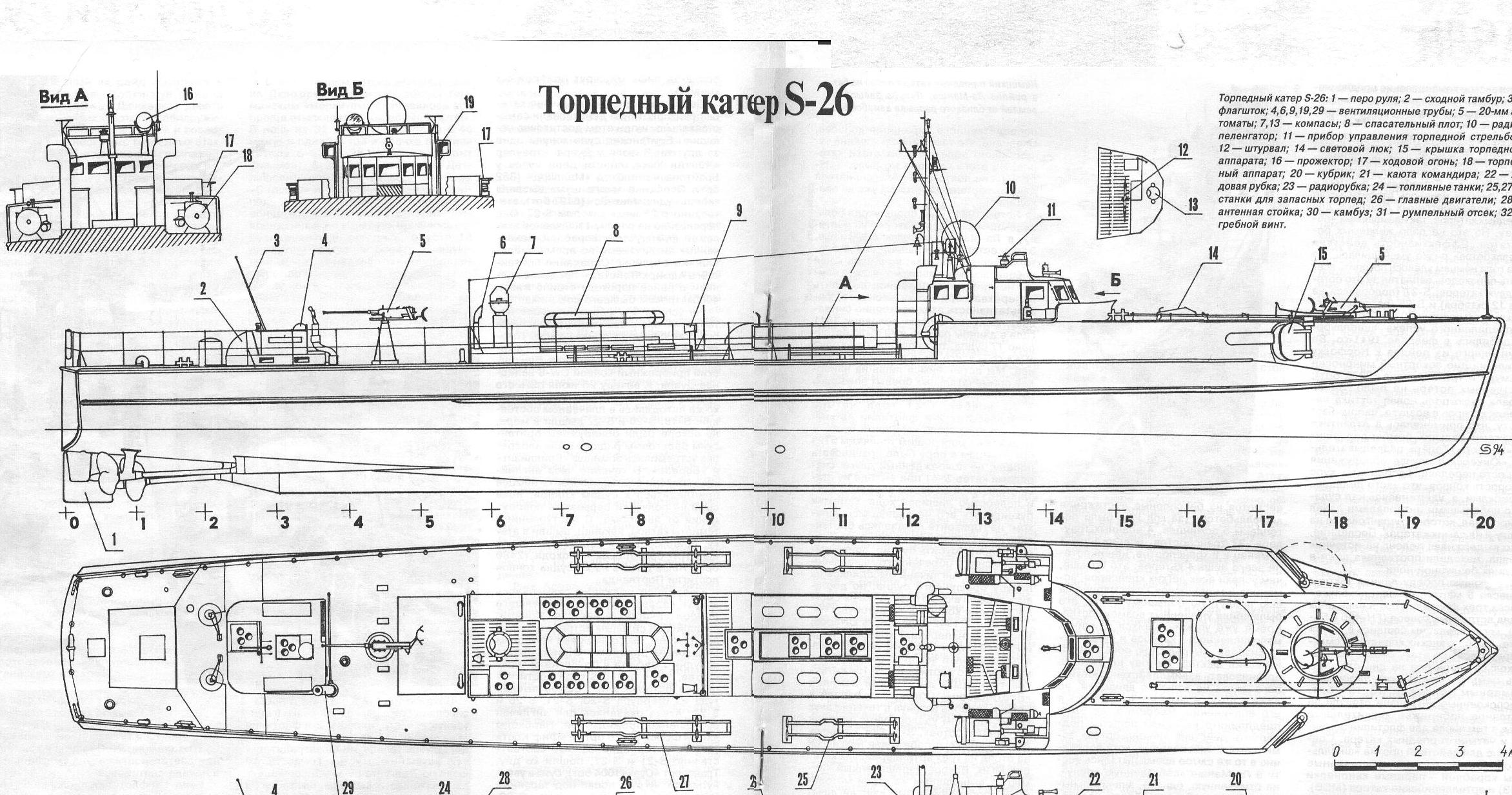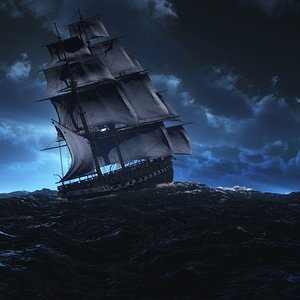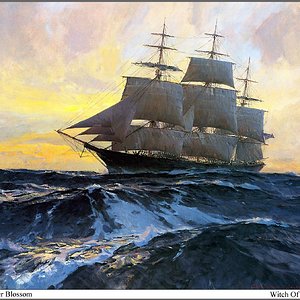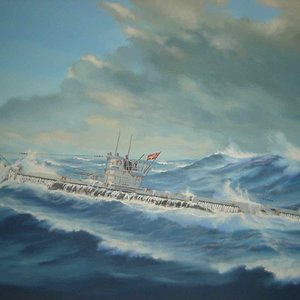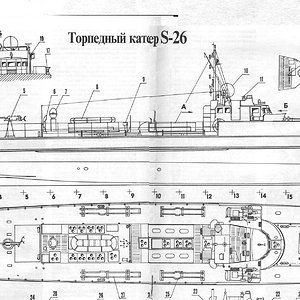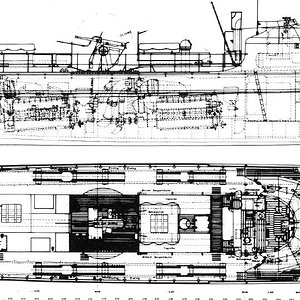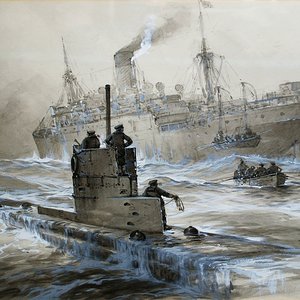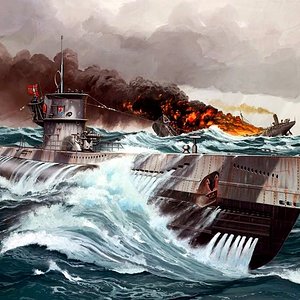Navigation
Install the app
How to install the app on iOS
Follow along with the video below to see how to install our site as a web app on your home screen.
Note: This feature may not be available in some browsers.
More options
You are using an out of date browser. It may not display this or other websites correctly.
You should upgrade or use an alternative browser.
You should upgrade or use an alternative browser.
Specification
Length: 34.9 m (114 feet 6 inches)
Weight: up to 120 t
Speed: 43.8 kts
Engines: Three 20-cylinder 2000 hp Daimler-Benz MB501 diesels driving three shafts.
Armament: 2 × 53.3 cm (21 inches) torpedo tubes, with room for 2 more torpedoes (for reloading).
1 × 20 mm gun, (20 mm single on early boats, twin and special bow version on later classes)
1 × 40 mm gun (40 mm Bofors) on some S-38 class boats
Other AA armament carried on different models included two or more pintle-mounted MG-34s, 3.7 cm Flak 42 (S-100) and 8.6 cm RaG M42 (S-100) or, rarely, a quad 2 cm flak mount.
Thomas Whitehead's 1866 invention, the torpedo, was a revolution in naval warfare. The first examples were short ranged and ponderously slow but the implications were great: it could enable a small craft to destroy a much larger one, or a small navy to threaten a great navy. It could also be fired underwater. In the naval arms race that preceded the First World War the potential of such a device was fully understood and appreciated by German naval engineers seeking ways to undermine the British Navy's global power. The German U-Boat fleet, while not securing a victory for Germany, proved beyond any doubt the effectiveness of Whitehead's invention.
In the 1920's German Naval Command once again found themselves in the position of a weak force anticipating battle with a much stronger one. And once again the torpedo presented a viable solution. Using considerable experience gained in Germany during the First World War, Naval Command began working on improving torpedos and creating vessels to deliver them.
The Schnellboot carried 53.3 cm torpedos. Typically one in each tube, although provisions were available for two reload torpedos. In practice, reload torpedos were infrequently carried, as their weight adversely affected boat performance, and the hit-and-run tactics used by the boats rarely allowed time for reloading.
The Schnellboot's other weapons were chiefly for self defense. As the war progressed, defense was increased and adapted to meet the demands of an ever more hostile environment. The chief threat came from the air and anti aircraft weaponry increased dramatically. While the early S-Boats carried a single 2 cm Flak gun and a compliment of several light machine guns, the later armored bridge boats carried multitude of weapons including the 4cm Bofors, the 3.7cm Flak 42 and in a few cases the the four barelled 2cm Flakvierling.
Later boats beginning with the S-38 class mounted a specialized 2cm gun turret on the bows, between the torpedo tubes. The position gave the gunner a good field of fire, and some protection. The first type of bow gun was a simple Scarff ring, with ammunition passed from belowdecks through a hatch inside the tub. Later an experimental Luftwaffe turret design was adapted for S-Boot use as the "Drehkranzlafette 41". It could deliver fire in a hemispherical arc, from 0 to 90 degrees of elevation, and 360 degrees of traverse. It had a pantograph gunsight that enabled the gunner to fire upwards at aircraft without crouching. The gun was stowed by swinging the mount downwards into the tub on a hinged pivot and removing the barrel, which was stowed separately. A cover was manually fixed over the turret, protecting it from salt water spray. Several different ammunition stowage arrangements were used, with clips stowed for ready use on the deck. The earlier detachable metal retainers were later replaced with simplified fixed wooden retainers.
The Schnellboot was essentialy a torpedo delivery system. Its basic function was to bring a torpedo within firing range of an enemy vessel, aim, and shoot. The rest was up to the torpedo alone. Peacetime wargames showed that the most effective way to accomplish this task was to operate in small groups under the cover of darkness. Boats might lie in wait at a particular spot where a convoy was expected. If it was sighted the S-Boats would approach, fire and flee under a smokescreen.
To aim the torpedo, the target was sighted through a binocular bearing finder mounted in center of the bridge or cockpit. Bearing and range was mechanically passed into an analog torpedo computer directly beneath it. The torpedo computer could make fine helm adjustments. When heading, range and course was coordinated with the computer's firing solution, the torpedos were fired. Simple in theory, it demanded great skill and steady nerves in practice.
Length: 34.9 m (114 feet 6 inches)
Weight: up to 120 t
Speed: 43.8 kts
Engines: Three 20-cylinder 2000 hp Daimler-Benz MB501 diesels driving three shafts.
Armament: 2 × 53.3 cm (21 inches) torpedo tubes, with room for 2 more torpedoes (for reloading).
1 × 20 mm gun, (20 mm single on early boats, twin and special bow version on later classes)
1 × 40 mm gun (40 mm Bofors) on some S-38 class boats
Other AA armament carried on different models included two or more pintle-mounted MG-34s, 3.7 cm Flak 42 (S-100) and 8.6 cm RaG M42 (S-100) or, rarely, a quad 2 cm flak mount.
Thomas Whitehead's 1866 invention, the torpedo, was a revolution in naval warfare. The first examples were short ranged and ponderously slow but the implications were great: it could enable a small craft to destroy a much larger one, or a small navy to threaten a great navy. It could also be fired underwater. In the naval arms race that preceded the First World War the potential of such a device was fully understood and appreciated by German naval engineers seeking ways to undermine the British Navy's global power. The German U-Boat fleet, while not securing a victory for Germany, proved beyond any doubt the effectiveness of Whitehead's invention.
In the 1920's German Naval Command once again found themselves in the position of a weak force anticipating battle with a much stronger one. And once again the torpedo presented a viable solution. Using considerable experience gained in Germany during the First World War, Naval Command began working on improving torpedos and creating vessels to deliver them.
The Schnellboot carried 53.3 cm torpedos. Typically one in each tube, although provisions were available for two reload torpedos. In practice, reload torpedos were infrequently carried, as their weight adversely affected boat performance, and the hit-and-run tactics used by the boats rarely allowed time for reloading.
The Schnellboot's other weapons were chiefly for self defense. As the war progressed, defense was increased and adapted to meet the demands of an ever more hostile environment. The chief threat came from the air and anti aircraft weaponry increased dramatically. While the early S-Boats carried a single 2 cm Flak gun and a compliment of several light machine guns, the later armored bridge boats carried multitude of weapons including the 4cm Bofors, the 3.7cm Flak 42 and in a few cases the the four barelled 2cm Flakvierling.
Later boats beginning with the S-38 class mounted a specialized 2cm gun turret on the bows, between the torpedo tubes. The position gave the gunner a good field of fire, and some protection. The first type of bow gun was a simple Scarff ring, with ammunition passed from belowdecks through a hatch inside the tub. Later an experimental Luftwaffe turret design was adapted for S-Boot use as the "Drehkranzlafette 41". It could deliver fire in a hemispherical arc, from 0 to 90 degrees of elevation, and 360 degrees of traverse. It had a pantograph gunsight that enabled the gunner to fire upwards at aircraft without crouching. The gun was stowed by swinging the mount downwards into the tub on a hinged pivot and removing the barrel, which was stowed separately. A cover was manually fixed over the turret, protecting it from salt water spray. Several different ammunition stowage arrangements were used, with clips stowed for ready use on the deck. The earlier detachable metal retainers were later replaced with simplified fixed wooden retainers.
The Schnellboot was essentialy a torpedo delivery system. Its basic function was to bring a torpedo within firing range of an enemy vessel, aim, and shoot. The rest was up to the torpedo alone. Peacetime wargames showed that the most effective way to accomplish this task was to operate in small groups under the cover of darkness. Boats might lie in wait at a particular spot where a convoy was expected. If it was sighted the S-Boats would approach, fire and flee under a smokescreen.
To aim the torpedo, the target was sighted through a binocular bearing finder mounted in center of the bridge or cockpit. Bearing and range was mechanically passed into an analog torpedo computer directly beneath it. The torpedo computer could make fine helm adjustments. When heading, range and course was coordinated with the computer's firing solution, the torpedos were fired. Simple in theory, it demanded great skill and steady nerves in practice.

